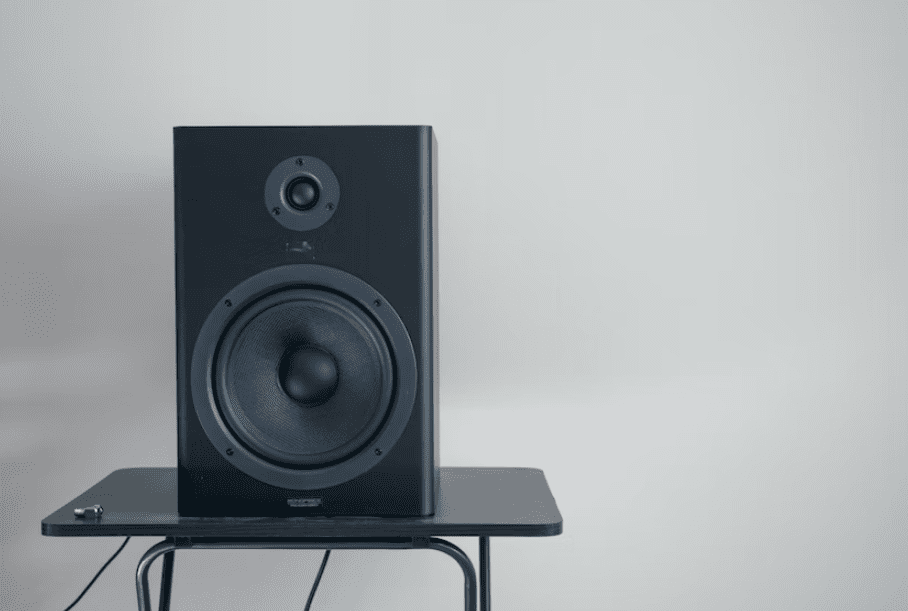If you want to enjoy music without having to turn up the volume, it helps to invest in a pair of speakers. But how much do you really need to spend?
The price of high-end speakers varies depending on the brand. Some brands are known for making quality products, while others focus on marketing and design.
Most brands offer premium audio equipment. They tend to cost more because they use high-quality materials that make the product stronger and more durable.
Quality matters. A good pair will last longer and sound much better than cheap ones. Durability is another factor that influences the price of a speaker.
Are Expensive Speakers Better And Worth It?

The question of whether expensive speakers are better than cheaper ones is a difficult one because there isn’t really a clear answer.
Generally, expensive speakers will do better than budget models, particularly if you’re seeking out the best sound quality. But it’s more important to look at how well the speaker does what you want it to do, rather than just focus on the price tag.
If you need something to play music, a good pair of speakers will work fine. But if you need something to project movies or games, you’ll probably want to spend a little extra money.
The problem is that when it comes down to choosing between cheap and expensive speakers, you end up using a subjective term. Expensive to one person could mean cheap to someone else.
So, what makes a speaker “expensive”? Well, it depends on where you live. In some places, $1,000 speakers are considered high-end. In others, they’re low-end. You’ll find that most people don’t even consider anything under $500 to be “cheap.”
There are many factors that go into determining what constitutes “high-end,” including the size of the room, the number of people in the room, and the type of music being played.
For example, if you’re playing classical music in a small space with only a few people, you won’t necessarily need a lot of basses.
On the other hand, if you’re playing heavy metal in a large room with lots of people, you’ll definitely want to invest in a subwoofer.
What To Look For In A Good Speaker

When purchasing a pair of speakers, there are many factors to consider. You want to make sure you’re getting something that sounds great, fits well into your home, and won’t break the bank. Here are some tips to help you find the best speakers for your needs.
Clear Treble
The treble range is the highest frequency part of the audio spectrum. A good pair of speakers should continue to produce clean highs even at maximum volumes. If you listen to music at loud levels, it’s important to make sure that the bass response isn’t being compromised. You don’t want to hear a muddy bottom end because the speakers are struggling to reproduce low frequencies.
Deep Bass
Whether your planned speakers have a subwoofer or not is unimportant; check out our top recommendations for subs based on actual testing in a real-world setting. You’ll find a wide range of options across price points, features, and sound quality.
The Loudness
A speaker’s ability to reproduce audio without distortion is called dynamic range. Dynamic range refers to how much volume a speaker can handle while still maintaining clarity. A good speaker will have a wide dynamic range. This allows it to play music loudly without distorting it. On the flip side, a poor speaker will start to distort and vibrate at high volumes. This indicates a low dynamic range.
Sensitivity
The sensitivity rating of a speaker refers to how much power it needs to produce sound. A lower number indicates that the speaker requires less power to produce the same volume. So, if you want to know what type of speakers are best suited for your room, look up the sensitivity ratings of each model.
Decibels
Speaker sensitivity is measured in decibels of sound pressure level for each watt of amplifier power, normally measured from one meter away from the speaker. A good pair of speakers will produce around 90dB, while lower numbers indicate poor quality.
These are some general points to consider when choosing a set of loudspeakers.
Many of these can be tested by listening to the speakers themselves, though this obviously won’t be possible before the purchase.
Another helpful tip is to read user reviews – forums are a great place for this kind of info, as many audiophiles enjoy sharing their experiences to help fellow enthusiasts.
Impedance
Speaker impedance is measured in ohms, and 8 ohms is a fairly common value. However, you can buy speakers that work at 4ohms, but these are usually very expensive, and you’ll probably need a much better amp than normal to use them to their fullest potential.
Why High-End Speakers Are Expensive

One of the main reasons why high-end speakers can be so expensive is because of the design of the speakers and brands. Some manufacturers spend a great deal of money designing the actual electronics inside the speakers, while others focus on making sure the speakers look good. There are also some companies that make high-end speakers that are incredibly durable and built to withstand heavy use.
Some of the things that affect the overall cost of a speaker include the materials used, the build quality, and even the size of the speaker itself.
Weight Is Usually Related To Driver Quality
Speakers are often referred to as being either light or heavy. Light speakers tend to be small and portable while heavy ones are usually larger and more powerful. But what does weight really mean? How do you know whether a speaker is heavy or light?
There are many factors that go into determining how much weight a speaker will have. One of the most important things to consider is the driver itself. A good speaker requires a high-quality driver that can accurately reproduce sound waves. This is why you see big, bulky speakers like subwoofers and tower speakers. These types of speakers use large woofers and tweeters that produce strong bass tones.
The size of the enclosure is another key consideration. Larger enclosures generally mean better sound quality. You want a speaker that fits well within your room without taking up too much space. If you plan on placing multiple speakers throughout your home, make sure that they don’t interfere with each other.
Finally, there is the matter of materials used in making the speaker. Some speakers use metal parts while others use plastic. Metal tends to be stronger and more durable. However, some people prefer the look and feel of plastic. So, if you’re looking for something sleek and modern, choose a speaker that uses plastic.
Why Light Speakers Are Usually Not So Good

The added weight also reduces the vibrations of the speaker or within its own structure. This is dually important because the sound will be immediately affected if you can hear the component’s vibration while it’s producing moderate-to-high levels of bass.
Secondly, a vibrating speaker will eventually loosen components and begin to sound distorted. This means a speaker that doesn’t hold up well could sound good now, but terrible in just a few months.
Engineering
Expensive speakers typically use more expensive components, but sometimes they design entirely new elements. For example, some people think that a speaker sounds better if the sound comes from one point in the room.
For this reason, manufacturers like KEF put one driver in the middle of another. Instead of the tweeter being a few inches above the midrange, the tweeter is within the midrange. This requires additional design and engineering and can also increase manufacturing costs.
Expensive Speaker Materials
Some speakers may be more expensive due to the materials used in their construction. For instance, wooden enclosures are often built out of finished walnut wood or painted with a red piano finish. This adds additional costs to the production process, which can be passed on to consumers.
The level of workmanship or intricacy of the design can also affect the price tag. A speaker with a beautifully handcrafted enclosure could be twice as much as one with a simple plastic box. There are many factors that go into determining the final price of a speaker, including the size, shape, and quality of the enclosure, the type of driver(s), the number of drivers, and even the color.
Set Your Speaker Budget

There are many variables involved in setting a speaker budget. We want to help you understand how to set one based on what you actually want out of it. To start, we recommend looking at our guide on how to choose a pair of speakers. This will provide some insight into what type of experience you are seeking. Once you know what you want, you can move on to the next step.
The first thing to consider is whether you want a home theater setup or just a simple stereo system. If you plan to use it primarily for music, movies, and TV, you might be able to do without surround sound. However, if you enjoy gaming, sports, or watching videos, you’ll probably want a true 7.1-channel system.
Next, you’ll want to look at the size of your room. If you’re lucky enough to have a big space, you’ll likely be able to fit multiple pairs of speakers throughout. But if you live in a small apartment, you may only be able to fit one pair. In either case, you’ll want to make sure that you don’t overspend.
Finally, you’ll want to take a look at your needs. Do you listen mostly to music? Are you planning on playing games? Do you watch movies? All of those things require different types of speakers. For example, if you mainly listen to music, you’ll want something that sounds great while sitting down. If you like to play games, you’ll want something with a little bass. And if you prefer to watch movies, you’ll want something powerful.
Once you’ve got a rough idea of where you stand, you can begin shopping around. There are plenty of options out there, ranging from inexpensive Bluetooth speakers to high-quality audio systems. Take your time and try out several models. You may find that you can save money by buying a cheaper model and upgrading later.

